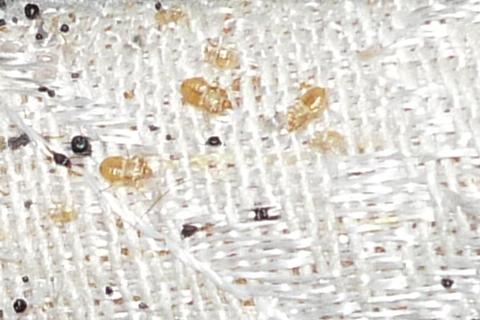Categories
- Bed Bug
- Bed Bug Cream
- BED BUG DATABASE
- Bed Bug Home Remedies
- Bed Bug Oil
- Bed Bug Remedies
- Bed Bug Spray
- Bed Bugs New York
- Bed Bugs Vancouver
- Bed Bugs World
- Bed Bugs American Samoa
- Bed Bugs Canada
- Bed Bugs Guam
- Bed Bugs North Mariana islands
- Bed Bugs Puerto Rico
- Bed Bugs United States
- Bed Bugs Alabama
- Bed Bugs Alaska
- Bed Bugs Arizona
- Bed Bugs Arkansas
- Bed Bugs California
- Bed Bugs Colorado
- Bed Bugs Connecticut
- Bed Bugs Delaware
- Bed Bugs Florida
- Bed Bugs Georgia
- Bed Bugs Hawaii
- Bed Bugs Idaho
- Bed Bugs Illinois
- Bed Bugs Indiana
- Bed Bugs Iowa
- Bed Bugs Kansas
- Bed Bugs Kentucky
- Bed Bugs Louisiana
- Bed Bugs Maine
- Bed Bugs Maryland
- Bed Bugs Massachusetts
- Bed Bugs Michigan
- Bed Bugs Minnesota
- Bed Bugs Mississippi
- Bed Bugs Missouri
- Bed Bugs Montana
- Bed Bugs Nebraska
- Bed Bugs Nevada
- Bed Bugs New Hampshire
- Bed Bugs New Jersey
- Bed Bugs New Mexico
- Bed Bugs New York
- Bed Bugs North Carolina
- Bed Bugs North Dakota
- Bed Bugs Ohio
- Bed Bugs Oklahoma
- Bed Bugs Oregon
- Bed Bugs Pennsylvania
- Bed Bugs Rhode Island
- Bed Bugs South Carolina
- Bed Bugs South Dakota
- Bed Bugs Tennessee
- Bed Bugs Texas
- Bed Bugs Utah
- Bed Bugs Vermont
- Bed Bugs Virgin Islands
- Bed Bugs Virginia
- Bed Bugs Washington
- Bed Bugs Washington DC
- Bed Bugs West Virginia
- Bed Bugs Wisconsin
- Bed Bugs Wyoming
- BedBug Removal
- BedBugs in Michigan
- Canada Bed Bugs
- Do it yourself Bed Bug
- Exterminator Bed Bugs
- Health
- Pest Inspection
- Toronto Bed Bugs
- Welcome to Bed Bugs
Registry Sites List
- Bronx Bed Bug Registry Infestation Maps, Residential And Hotel
- Brooklyn Bed Bug Registry Infestation Maps, Residential And Hotel
- Manhattan Bed Bug Registry Infestation Maps, Residential And Hotel
- Nyc Bed Bug Registry Infestation Maps, Residential And Hotel
- Queens Bed Bug Registry Infestation Maps, Residential And Hotel
- Staten Island Bed Bug Registry Infestation Maps, Residential And Hotel
Recommended Sites
Daily Archives: November 1, 2022
News Links:
Bed Bug Molting
Bed Bug Molting
 Bed bugs must molt five times before they become adults. This is even a bigger problem when you consider that the eggs of bed bugs are transparent, which makes them difficult to find. Each time that a bed bug molts its skin, it will need a meal of blood, and this occurs five times in their lifetime. Bed bug nymphs resemble the adults but are smaller and have a pale yellow coloration after molting. The nymphs undergo five molts, becoming successively larger after each molt. Since some Bed bug nymphs may feed more successfully than others, development time may vary greatly even among nymphs from the same generation. For this reason, both adults and nymphs will usually be present throughout the year.
Bed bugs must molt five times before they become adults. This is even a bigger problem when you consider that the eggs of bed bugs are transparent, which makes them difficult to find. Each time that a bed bug molts its skin, it will need a meal of blood, and this occurs five times in their lifetime. Bed bug nymphs resemble the adults but are smaller and have a pale yellow coloration after molting. The nymphs undergo five molts, becoming successively larger after each molt. Since some Bed bug nymphs may feed more successfully than others, development time may vary greatly even among nymphs from the same generation. For this reason, both adults and nymphs will usually be present throughout the year.
 Newly-hatched nymphs will feed as soon as possible, then usually feed once between each molt. If left undisturbed, a Bed bug can obtain a full blood meal in 3 to 5 minutes. Bed bugs can live for 4 to 12 months without feeding. The bugs will survive longer without a meal at lower temperatures than at higher temperatures.You won't usually see bed bug activity during daylight hours, but you may see other signs of bed bugs. As nymphs molt, they leave behind their shedded skins, which accumulate as the population rises.
Newly-hatched nymphs will feed as soon as possible, then usually feed once between each molt. If left undisturbed, a Bed bug can obtain a full blood meal in 3 to 5 minutes. Bed bugs can live for 4 to 12 months without feeding. The bugs will survive longer without a meal at lower temperatures than at higher temperatures.You won't usually see bed bug activity during daylight hours, but you may see other signs of bed bugs. As nymphs molt, they leave behind their shedded skins, which accumulate as the population rises.
 Bed bug excrement appears as dark spots, and crushed bed bugs will leave bloody marks on bed linens. Closely inspect your bed, mattress, box spring and head board for black or blood spotting or signs of bed bug molting or the bed bugs themselves. The best color for these items is white, white color items makes it the hardest for bed bugs to hide. Mattresses and box springs come in all colors sizes and shapes, choose white color for best ability to monitor bed bugs.
Bed bug excrement appears as dark spots, and crushed bed bugs will leave bloody marks on bed linens. Closely inspect your bed, mattress, box spring and head board for black or blood spotting or signs of bed bug molting or the bed bugs themselves. The best color for these items is white, white color items makes it the hardest for bed bugs to hide. Mattresses and box springs come in all colors sizes and shapes, choose white color for best ability to monitor bed bugs.
closely inspect your bed, mattress, box spring and head board for black or blood spotting or signs of bed bug molting or the bed bugs themselves. The best color for these items is white, white color items makes it the hardest for bed bugs to hide. Mattresses and box springs come in all colors sizes and shapes, choose white color for best ability to monitor bed bugs.
Bed bugs are active at night and hide during the day. After mating, females lay white, oval eggs (1/16-inch long) into cracks and crevices. An individual bed bug can lay 200-250 eggs in her lifetime. The eggs hatch in about 6-10 days and the newly emerged bed bug nymphs seek a blood meal. Immature nymphs molt five times (i.e., they shed their outer exoskeleton in order to grow) before reaching adulthood. They need to feed at least once before each molt, although they could feed as often as once a day. There may be three or more generations per year. All ages are found in a reproducing population. Immature bed bugs may live for several months without feeding while adults may survive as long as one year without a meal. Under normal circumstances, adult bed bugs will live for about ten to eleven months.
Posted in BED BUG DATABASE
Comments Off on Bed Bug Molting

 Residence
Residence  Location
Location 










